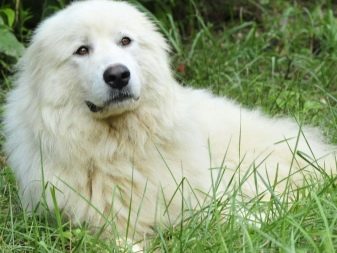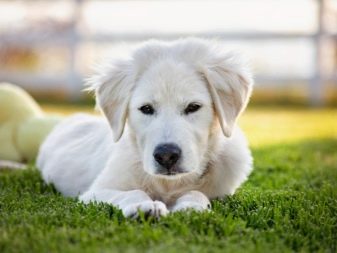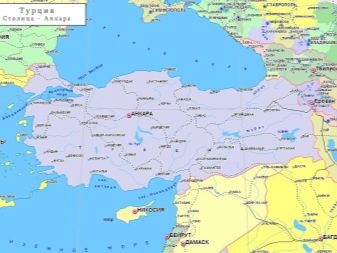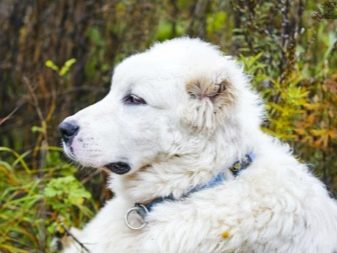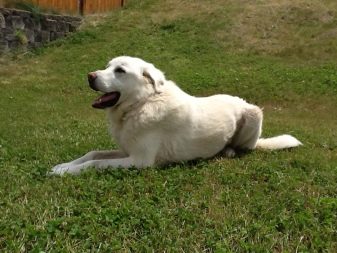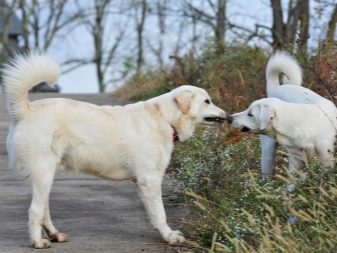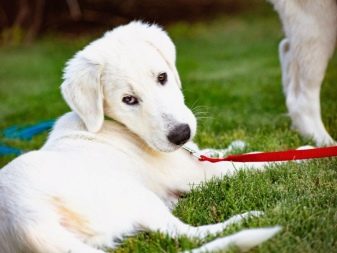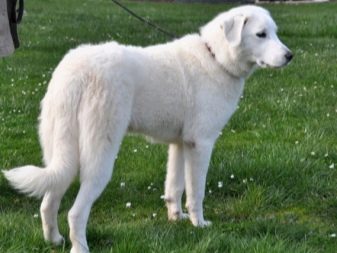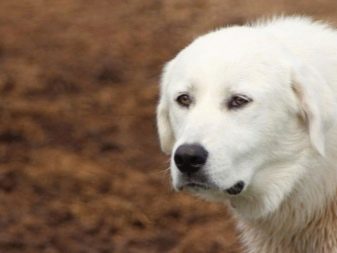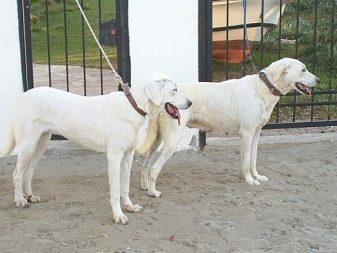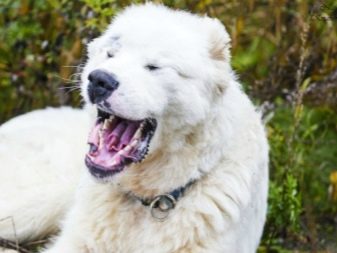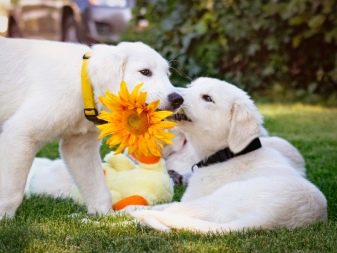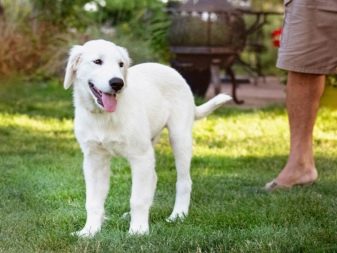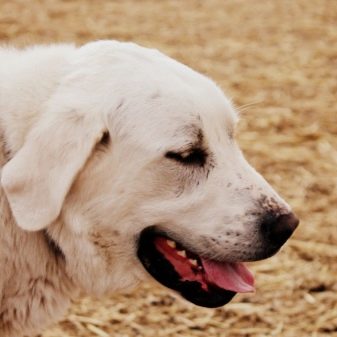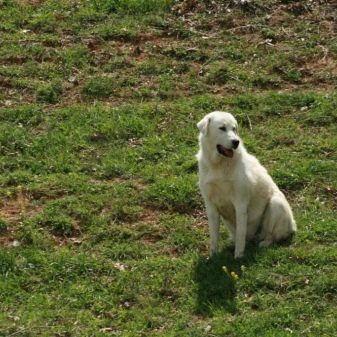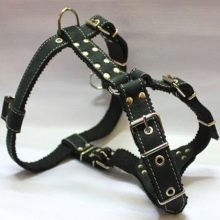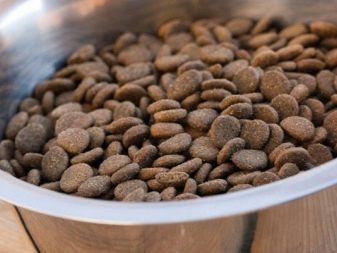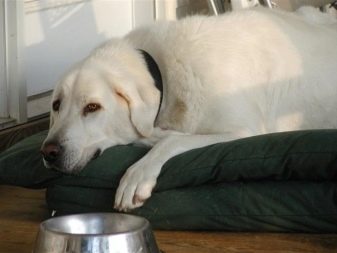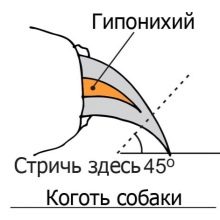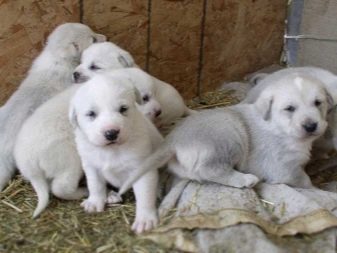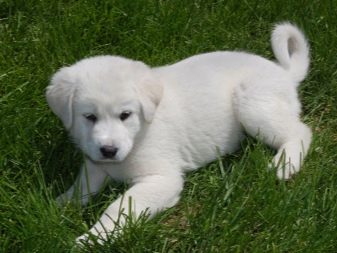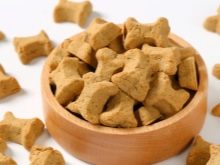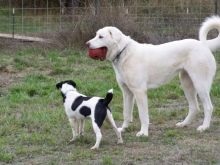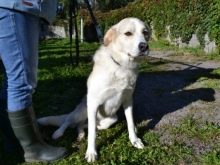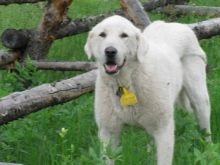Akbash is a unique shepherd's dog, and in its working qualities it stands out noticeably against the background of other breeds used to protect the herd. Being an excellent security guard with a well-developed sense of duty, the akbash will not, under any circumstances, throw not only the flock, but also a lamb that has fallen behind her or a weakened individual.
Description
The history of the creation of the Turkish akbash breed has its roots in the distant past. According to some sources, their closest relatives are the Anatolian Shepherd, the Kangali Karabash, the Pyrenean Mountain Dog, the Hungarian Komondor and the Tatra Shepherd Dog. Since the earliest times, the main destination of the breed was protection and cattle grazing, with which Akbashi coped much better than other herding dogs living at that time in Turkey. A large dog was able to stand on equal footing with several wolves and repel bear attacks, which of course could not boast of other breeds.
For a long time, dogs of this breed were bred exclusively in Turkey., and they became more widespread only in the second half of the 70s of the last century, when they were brought to the United States of America. The Americans really liked a breed unknown to them, and they began to actively breed this noble and fearless dog. However, in America, the animal was no longer used for its intended purpose - as a shepherd, but more as a guard and companion.
In view of the non-recognition by the International Canine Federation of the official standard of the Akbash breed, it simply does not exist. However, based on the results of the breeding work of specialists of large nurseries in Turkey and the United States, you can make a fairly clear description of the breed. So, its representatives are large dogs of white color, with long and straight legs and hairy tail. It is the breed that owes its name to it, since in Turkish the word “Akbash” means “white-headed”. A distinctive feature of dogs is well-developed musculature of the back and paws, as well as the head of impressive size.
As for the coat, a clear standard does not exist here, and dogs inside the breed can have several variants of wool.
The most common is the straight shiny coat of medium length, but often there are instances with thick and slightly wavy hair.
In both cases, the color remains invariably white, and the undercoat, consisting of soft hair, tight to the body, reliably protects the dog from temperature changes. Akbash is a rather tall breed, and if the growth of a bitch varies from 69 to 75 cm at the withers, then for some males it reaches 86-87 cm. The weight of animals is from 40 kg in bitches and up to 60 kg in large males. Life expectancy for representatives of this breed is 10-12 years.
Describing akbash, it is impossible not to mention the fact that the Ministry of Internal Affairs of the Russian Federation in early 2019 released an updated version of the list of dogs of especially dangerous breeds.
Akbash for a number of reasons is also present in this list, and therefore requires special rules of content that must be complied with. However, with the proper upbringing and use of a dog for its intended purpose, the akbash can turn out to be an excellent shepherd, a reliable property guard and a fearless protector.
Not without reason, in the Turkish province of the same name located in the west of the country, there is a sculpture of a Turkish Akbash breed dog, and an experienced shepherd will choose this breed in most cases when choosing a shepherd dog.
Advantages and disadvantages
The demand for akbash among cattle owners and genuine interest in the breed among the inhabitants are due to a number of indisputable advantages of this unique breed.
- Dogs are distinguished by high intelligence and ingenuity, which is why they can be more and more often found in the role of guard and companion.
- Devotion and independence of akbashy well-known dog handlers. The dog will never give offense to the owner, and will determine the degree and reality of the threat posed by the offender.
- Representatives of the breed are distinguished by an enviable responsibility and under no circumstances leave their post. In this way they differ from many shepherd’s breeds, for example, from the kangal, which, without hesitation, will throw the herd and run after the wolf or any other predatory beast. Akbash will either deal with the predator on the spot, or simply scare him away from the flocks, but will never rush afterwards.
- High endurance and unpretentiousness to the conditions of detention allow the dog to be used to guard nomadic herds, which constantly move over considerable distances in search of better pasture. The dog will tirelessly help the shepherd and keep the herd under full control.
The disadvantages of the breed include difficulties in education, which are especially felt at the initial stage of training. During this period, the young animal is trying to dominate the owner or members of his family, and requires the owner to be iron-minded and persistent. However, with a professional approach and compliance with the recommendations of experienced dog handlers, the dog’s irrepressible energy can be quickly sent in the right direction, after which such problems usually do not arise. It should be said about the mercilessness to the offender, whom Akbash is unlikely to let go of his teeth on his own initiative.
It is because of excessive aggressiveness to the violators of the territory or the attackers, the dog was ranked as dangerous. For the sake of justice, it is worth noting that akbash dearly loves his family and friends of his family and will never allow himself aggression against them. However, the owner with such a guard should be treated quite respectfully, and even as a joke, do not raise his voice and raise his hand. Otherwise, Akbash will not particularly understand the playfulness of the attacks, responding to the alleged "offender" in all seriousness.
Character traits
Despite the fact that in Turkey akbashi is considered to be a wolfhound, outside of work on the herd and in a quiet home environment they are absolutely not snooty and get along well with all pets living in the same house with them. Akbashi are very wary of strangers, so any territorial invasions of neighboring cats and dogs can end very sadly. It should be noted that in neutral territory the dog will not pay any attention to strangers, if only they do not threaten the owner. However, the dog, who came to the house for the first time, will not immediately bite the dog, but first it will analyze the purpose of the visit and look at the reaction of the owner.
If akbash sees the friendliness of the owner to the newcomer, he will step aside and settle down with an independent look. However, indifference will be only ostentatious: in fact, the dog will closely monitor the situation and keep it under control. According to this character trait, many breeders compare akbash with a German shepherd, well-known for its high intelligence, “everyday” wisdom and ability to make independent decisions.
Another important advantage of akbash character is his ability to get along with children, which is not the case with most other herding breeds, which at best simply ignore babies.Akbash, in relation to the child, will show some dominance, but absolutely without malice and aggression. Even if the child starts to annoy the Akbash too much with his games, the dog will tolerate his liberties for a long time, and then just go to a secluded place.
However, due to the too large dimensions of the dog, it is impossible to leave very small children alone with her. The animal, unwittingly, can pin down or drop the child on the ground, which will frighten or even hurt him.
For the sake of justice, it is worth noting that such an attitude towards children is the result of training and proper upbringing, rather than an innate trait of akbash character. Therefore, to allow children to working shepherd dogs that are not adapted to society, is strictly prohibited.
Content policy
Keep a dog breed Akbash need to "free." If the dog is taken not as a shepherd, but for personal protection and protection of property, then a large private plot will be the best option. Due to the availability of space for games and walks, the animal will fully meet the requirements in physical activity and develop correctly. And on the contrary - individuals that are kept in apartments and walk a little, look rather passive and depressed. Therefore, housing maintenance is permissible as a temporary measure and only in exceptional cases, for example, in case of an animal disease or under other force majeure circumstances. At any other time, dogs of this breed must live in the open air and be able to run and play a lot.
Considering the conditions of the breed, it is necessary to touch on another important topic - landing on the chain. In no case can this be done, since the shepherd dogs cannot be in this position, and this especially applies to the Turkish akbash. The chain animal quickly loses its working qualities and interpersonal skills, becomes unmanageable and overly aggressive.
As an option, you can consider the construction of a spacious cage, but put on a chain is strictly prohibited. If there is no possibility to organize a dog a large personal space and engage in its upbringing, then it is better to look at some other breed, as akbash needs to create special conditions of detention and the host’s careful attitude.
Another important aspect of the contents of akbash is to ensure the safety of others. In this regard, the owners of dogs living in society, it is necessary to undergo a course of training, to protect the territory of household with a strong fence and hang on the gate and gate sign warning of the presence of an evil dog.
In addition, walks in public places are allowed only if there is a short leash, a strict collar and a muzzle, the absence of which can entail administrative liability and a fine.
What to feed?
The diet of Akbash breed dogs is no different from the diet of other large dogs and may include natural food or feed. The menu of an adult dog eating regular foods should consist half of raw or slightly cooked meat, buckwheat, rice or oatmeal, as well as a small amount of vegetables and fruits. Whole milk is not given to dogs, but fermented milk products are very useful for them, as is sea fish offered to animals in small quantities. As well as dogs who are on a natural feeding, provide vitamin-mineral complexes, bone meal and fish oil.
It is strictly forbidden to feed the dog with sweets, flour and confectionery, smoked products and pickles: such food can cause an allergic reaction and adversely affect the work of the pancreas. You should not combine food, that is, to mix specialized food and regular food. Such a diet will lead to unbalanced nutrition and will cause an excess of some trace elements against the background of a shortage of others.
As for the feeding regimen, puppies are usually fed from 3 to 5 times a day, and an adult animal - 1-2 times depending on the conditions of detention and the time of year. When working on guarding a herd, the dog is usually fed once a day, but very plentifully, while in domestic akbashi the daily ration is allowed to be divided into 2 times, to feed the animal in the morning and evening. During extreme cold, the dog is also fed twice a day, thus replenishing the calories spent on body heat.
When choosing feeds, preference should be given to formulations with a high content of substances necessary for the normal functioning of the musculoskeletal system. This is because their lack can lead to arthritis and hip dysplasia, which are a problem area for most large breeds.
How to care?
Representatives of the Akbash breed are very clean animals and do not have the smell of dog. In order for the dog to always look neat and well-groomed, it must be carefully combed at least twice a week. This will help to remove lost hair in a timely manner and prevent its tangling and churning in tow.. During moulting, the combing procedure is recommended daily, and with intensive hair loss, twice a day. In addition to combing, you should regularly trim the animal's claws and clean the ears. It is necessary to bathe a dog as necessary, but not more often than once a month.
As well as the dog must be immunized by age, and once every 3 months to de-worming.
Training
This aspect of akbash dog breeding is very important, and sometimes it is because of the need for regular training and training that many dog breeders opt for the simpler breeds in terms of training. The main guarantee of cultivation of a mentally balanced and obedient dog is perseverance and patience. With the training of puppies akbash better not to delay, starting it as soon as the baby reaches the age of 9-10 weeks. If there is no experience in raising shepherd dogs, then it is better to entrust the training to professional dog specialists who correctly organize the formation of guard and guard qualities and curb the excessive aggression of young males.
By nature, Akbash is a very smart and intelligent dog.which literally grabs everything new on the fly and assimilates the information with interest. When choosing the right technique, animals very quickly and well remember the commands, obediently carry them out. Experienced dog handlers are confident that the foundations of upbringing are laid up to 6 months of age, so it is the first six months that are decisive in shaping the character of the dog, and the mistakes made during this period can turn into big trouble in the future. For example, practicing exclusively guarding and guard qualities will result in excessive aggressiveness and distrust of the animal, and therefore, along with exercises to protect the dog, it needs additional socialization.
Without this, the dog will throw at each comer and give his master a lot of problems. In addition, like many herding dogs, akbash takes for a flock not only a flock, but also a large group of people. He does not allow anyone to separate from the "herd", and begins to guard and graze her in all seriousness. In order to prevent this from happening, you should as often as possible bring the puppy to places with large crowds of people, not forgetting to teach him to have a short leash and a muzzle.
Like any sheepdog, akbash is obedient and performing, but it requires a fairly solid communication. It is important from the first days to show the puppy that the main thing in the house is not he, but the owner, and to fulfill his commands is the direct responsibility of the dog. The training is carried out by the classical method with the help of “carrots and sticks”, without using physical force.
The puppy perceives strict intonation and verbal punishment quite well, therefore it is absolutely impossible to beat and kick it.
However, not everything is so smooth in the upbringing of the Turkish akbash, and the main thing is the ability to find a common language with the dog. This is due to innate restraint and a developed sense of self-esteem, which requires appropriate communication and respect for the dog. Due to this peculiarity of character, experienced dog experts do not recommend starting a Turkish akbash as the first dog. But people who have experience in the training of shepherd dogs will be able to educate themselves from akbash an excellent guard, reliable watchman and spiritual companion.
In the next video you can get acquainted with an amazing breed of Akbash dogs.

